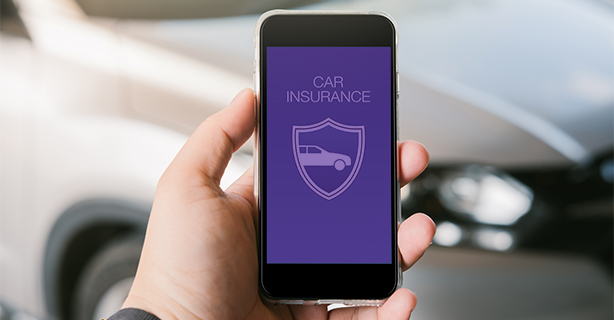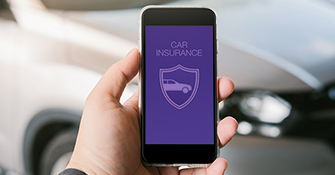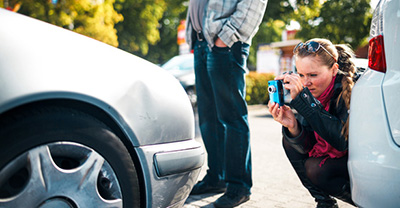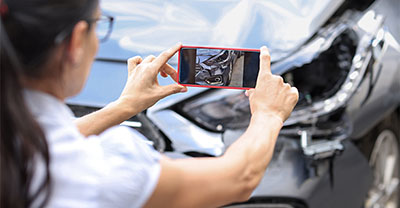How does car insurance work?


0 min. read
In exchange for insurance premiums, your insurer agrees to help pay for medical and property damage costs if you’re involved in an incident that meets the requirements of your contract.
Car insurance can help protect you from life-altering costs associated with car accidents and damage to vehicles. Our guide helps answer your questions about how car insurance works.
What is car insurance?
Car insurance is an agreement between you and an insurance company that may help financially protect you if:
You’re involved in a covered accident and injure another person and/or damage their vehicle or property
You’re injured in an accident
Your car is damaged, vandalized, or stolen
Several different types of car insurance coverages exist, each intended for specific scenarios. For example, some coverages help pay for other people’s injuries and vehicle damage if you’re at fault in an accident with them. Other coverages, help pay for your medical expenses and repairs to your own vehicle—even if it’s damaged by something other than an accident.
How does car insurance work?

Like other types of insurance, car insurance works through the payment of a premium to the insurance provider in exchange for a policy. When an accident occurs that triggers coverage under the policy, you file a claim to receive a payout.
For example, you could file an insurance claim to help cover the costs of replacing your bumper if it's damaged in a rear-end collision.
What happens with car insurance when you get into an accident
After an accident, the people involved typically file claims with their respective insurance companies. Regardless of your degree of fault in the accident, here are some important steps to take immediately following the accident—once it’s safe to do so:
Exchange insurance information with any other drivers involved
Report the car accident to the police
Take pictures of the accident scene, including damage to any vehicles involved
Once the insurance company receives this information, they’ll review and process the claim. They may contact you or the other driver if they need additional information. Depending on the outcome of the claim, you or the other party could receive payment or reimbursement for damages or other expenses related to the accident.
How car insurance works when you’re at fault

When you’re at fault for a car accident, several types of insurance coverages may apply. In particular, your auto liability insurance coverages can help pay for damage you cause to other vehicles and other people’s medical expenses. Collision insurance, helps cover damage to your own vehicle.
How no-fault car insurance works
No-fault car insurance—sometimes known as Personal Injury Protection (PIP)—can help protect you and your passengers following an accident, regardless of who was at fault. This coverage can help reimburse you for medical payments, lost wages, and other related expenses.
PIP is sometimes referred to as “no-fault” car insurance because it applies regardless of fault, often allowing drivers involved in an accident to avoid expensive, drawn-out investigations and court cases to determine fault in the accident.
It’s worth noting that some states require resident drivers to carry PIP, while other states don’t offer it at all.
No-fault car insurance limits

In states where no-fault auto insurance is required and/or available, you’ll need to select your coverage limit when adding this coverage to your policy. The limit establishes the maximum amount your insurance company will reimburse you following an accident.
If your post-accident expenses that fall under no-fault (or PIP) coverage exceed your limits, you may end up paying the remainder out of pocket or roll it to other applicable coverages.
Be aware that some states require minimum limits for no-fault insurance, and purchasing higher car limits means your rates or deductible will go up.
Do I need car insurance?
Yes. Most states have laws that require you to carry car insurance. It’s up to you and your insurance provider to ensure you carry the specific coverages—and amounts of coverage—you need, and determine the rates and insurance deductibles that fit your budget.
State-required insurance
Each state sets its own rules for what coverages a driver is required to carry, and the minimum limit amounts they need. The following coverages are required in many states:
Liability coverage
Bodily injury liability
Property damage liability
Uninsured motorist (UM) and underinsured motorist (UIM) coverage
Insurance providers in many states are required to offer this coverage, but drivers may be able to opt out or reject some of the coverages if done so in writing.

Find your state's car insurance requirements.
The costs of driving without insurance
You can incur costs from driving without insurance. Not only could you be responsible for damages that result from an accident when you’re at fault, there are also penalties and fines to pay for not following state regulations if you're caught driving without insurance.
Driving without insurance can also increase the cost for you to drive in the future. If you’re caught driving without insurance, insurers may categorize you as high-risk driver, which can make purchasing auto insurance more expensive. You may also need an SR-22 certificate to verify that you meet your state’s car insurance requirements.
What are the types of car insurance coverage?
Different types of car insurance coverage exist to protect against a variety of risks associated with driving a vehicle.
Liability auto insurance
Liability auto insurance helps pay for other people’s damages when you’re at fault in a covered accident. Your limits usually work on a per-person and per-accident basis.
The two most common types of liability auto insurance:

May help cover other people’s medical costs, lost income, pain and suffering, etc.

May help pay to repair or replace other people’s damaged vehicle and/or personal property
Comprehensive insurance

Comprehensive insurance is a coverage that can help pay for repairs if your vehicle is damaged by something unrelated to a collision, such as:
Theft
Vandalism
Animals, such as hitting a deer
Weather-related damage
Your policy limit usually caps at the value of your vehicle—unlike liability insurance limits—and a deductible would likely apply.

Collision insurance
Collision insurance helps cover damages to your car when the cause of the damage is an accident involving another car or stationary object. Collision generally covers the damages regardless of who’s at fault for the accident. The coverage limit will usually be the value of your vehicle, minus your established insurance deductible.
If it’s determined you’re not at fault, your insurance company may collect the cost to repair your vehicle—including your deductible—through a process called subrogation.
Personal injury protection (PIP) and medical payments
For bodily injury to the drivers and passengers in your vehicle, Personal Injury Protection (PIP) and medical payments insurance apply to help cover medical costs, loss of income, and other post-accident expenses.
PIP is required in some states but is unavailable in others. Medical payments coverage, meanwhile, is only required in New Hampshire, Pennsylvania, and Maine, and is optional (or at least rejectable) in almost all other states.
Uninsured (UM) and underinsured motorist (UIM) coverage
Uninsured and underinsured motorist coverage helps protect you against loss from accidents where another driver is at fault and doesn’t have—or has insufficient—liability coverage.
Nearly one in eight drivers on the road are uninsured, and even more are driving around with insufficient insurance. If you’re involved in an accident with an uninsured or underinsured driver and you don’t carry this coverage, you could end up paying for your expenses out of pocket.
Uninsured and underinsured motorist coverage may also offer a more efficient process for compensating your losses compared to pursuing legal claims in court.

What does car insurance not cover?
While there are insurance coverages available to help cover most costs and incidents related to driving, auto insurance policies often don’t cover certain items such as:
Costs for standard maintenance to your vehicle, like oil changes and new tires
Damage from normal wear and tear on the vehicle
Intentional damage you cause
Theft of personal property in your car (usually homeowner’s or renter’s insurance covers this)
You can always review the terms of your policy to confirm insurance coverage exclusions.
How is car insurance priced?
The cost of insurance depends on a variety of factors, including:
Driving history
Car insurance providers usually consider your driving history when setting your rates. This includes any prior citations for traffic violations, past accidents, and other insurance claims you’ve made. The cleaner your driving history, the more favorable your rates will typically be.
Vehicle type
The type of vehicle you drive may also impact the cost of auto insurance. Simply stated, the more expensive the vehicle, the more your insurance coverage will probably cost to cover its repairs. Repair costs for damages to your own vehicle are typically covered by comprehensive and collision.
Vehicle type can also impact insurance costs due to its risk of bodily injury. For example, the cost of coverage for a convertible may differ from the cost of coverage for an SUV since one provides more protection than the other in an accident.
The amount of damage a vehicle can cause is also an insurance cost factor—for instance, a larger vehicle can typically do more damage than a smaller vehicle.
Demographics
Demographics and their associated risk factors can also influence your car insurance costs:

Younger drivers are historically risky because of their lack of experience. Older drivers, meanwhile, can demonstrate slower reaction times, which also contributes to an increased accident and injury risk.

Men typically drive more miles than women and are more likely to practice risky driving behaviors like speeding, driving while under the influence of alcohol, and not wearing safety belts, according to the Insurance Institute for Highway Safety (IIHS).

Based on historical accident data, married drivers have a lower accident frequency than single drivers, and their rates are typically lower.

More populated areas often create a greater risk of accidents and theft.
Coverage and limit selection
The types of insurance coverage you want, including their policy limits, will influence the overall cost of your rates. For example, car insurance with high limits will usually correlate to higher rates.
Your deductibles will also impact your rates—just keep in mind that the variability often depends on the coverage itself. With some coverages, you can choose your limits; with others, you can choose your deductible. You’ll rarely, if ever, choose both.
Car insurance add-ons for covering custom accessories or towing and labor also tend to increase your total cost.

Get your auto insurance quote today.
How does a car insurance deductible work?
Car insurance deductibles usually apply on a per-claim basis. This means you must pay the deductible amount every time you make a claim before insurance will help cover the remainder up to the policy limit. Deductibles often range from $100 to $1,000, with a higher deductible corresponding to a lower premium.
How does auto insurance work for rentals?

If you have comprehensive and collision insurance, that coverage may extend to rental vehicles. Deciding whether to purchase additional car rental insurance depends on your existing coverage and how much risk you’re willing to take on.
Contact your insurance company to find out if you need to purchase additional coverage from the rental car company.
Should I get car insurance if I don’t own a car?
Car ownership is not a prerequisite to buying car insurance, and policies exist to help protect you if you occasionally get behind the wheel of cars you don’t own.
For example, non-owner car insurance can help provide coverage for injuries and damages to other people’s vehicles or property if you cause a covered accident. It can also supplement any coverage that might exist with the car’s primary insurance.
In some cases, a non-owner policy may be a good solution if you don’t own a vehicle and need an SR-22 because of prior violations involving a vehicle.
How does a car insurance claim work?
Car insurance claims usually begin when someone who was hit in an accident submits notice and details about the incident to the at-fault party's insurer. A claim adjuster will then evaluate the claim to confirm the policyholder’s coverage and determine the appropriate payout.
The mechanics of a car insurance claim will always depend on the specific process outlined in the policy, so read your contract or get in touch with your insurance provider for details.
How to buy car insurance
To buy car insurance, you can:

Start by providing information about you and your vehicle to an insurance provider to get a quick quote.

Once you find the coverages you want, you can set up your first premium payment and set your date for coverage to begin.

Afterward, you can schedule auto payments to help ensure your coverage never lapses.
Take the next step in your car insurance coverage
Ready to get your quote and drive protected? Let us be your source for affordable coverage that includes online and mobile account management tools, giving you 24/7 access to your insurance information.
The general information in this blog is for informational or entertainment purposes only. View our blog disclaimer.
*Data accuracy is subject to this article’s publication date.










